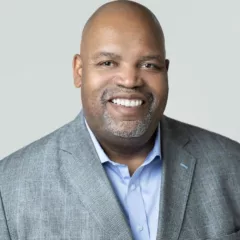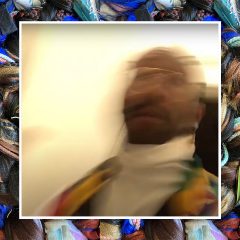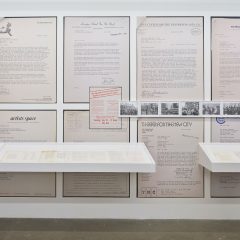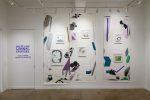[Evan gets the chance to see Laurie Anderson perform, talk about her work, and explain her creative process. — the Artblog editors]
Ever vibrant and always defying definition, artist and musician Laurie Anderson has graced our eyes and ears with challenging and still incredibly enjoyable creations since the 1960s. In person at this year’s New Yorker Festival and in conversation with the magazine’s music critic, Alex Ross, Anderson presented the audience not just with her anecdotes and views on the world that she inhabits and creates from, but a few musical works in performance as well.
Setting her own precedent
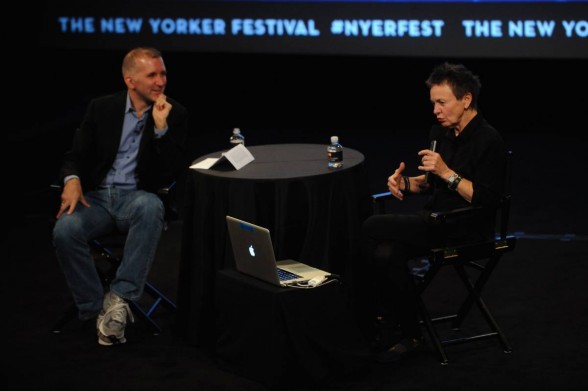
My introduction to Laurie Anderson’s work came in the form of her sprawling 1984 record Mister Heartbreak, an erratic expedition into the sonic wilderness that she has explored without a trail of breadcrumbs ever since; its exotic allure has stuck with me since I first heard it on cassette, coming through the speakers of a friend’s beat-up Volvo. Her first forays into working with sound came in the recordings she made for installations and performance pieces in the 70s, and then eventually led to the mainstream musical release of O Superman–a huge commercial success that hit #2 on the UK pop charts in 1981. Beyond confinement to any specific role, Anderson is above all a storyteller, and among the most adaptive, innovative, and sincere in decades.
The words “adaptation” and “innovation” may seem contradictory at times, but Anderson’s creative work has shown the merits of embracing new techniques and technologies and taking complete ownership of them; not referencing precedent, but creating it, and then making work that cuts through the sludge of conventional interpretation. In the largely male-populated world of electronic music, she has inspired an emphatic and sorely needed emergence of feminine presence and power. She once played a concert in the grandiose Sydney Opera House to an audience consisting of only dogs. In the world of the visual arts, she has agitated the Department of Homeland Security, virtually freed Death Row prisoners from their cells, and managed to make work that is profoundly empathetic and acutely aware. The term “interdisciplinary” no longer suffices–she is an entirely post-disciplinary creative mind.
Anderson’s relationship to technology is a frequently broached topic. Her attempts at separation from our information-laden society, paired with the fact that she is always using modern technology, create a “productive dichotomy”. Her response to Mr. Ross’s query on the topic was in no way stale–the most interesting aspect of her thinking about technology is the concept of doubt. In its most basic sense, doubt enters the conversation in the forms of issues like “Will it work?” or “Did it save?”, but more analytically, it is reflective of the apparent comforts and assurances of a society both literally and figuratively “backed up” by technology, and the actual fragility and danger of virtual information. This, along with the risks that over-reliance on technology poses to memory and the sanctity of personal connection and communication, fuels Anderson’s productively cynical narration of the conundrum of navigating modern American existence and surviving with your soul intact.
Disaster, loss, and new inventions
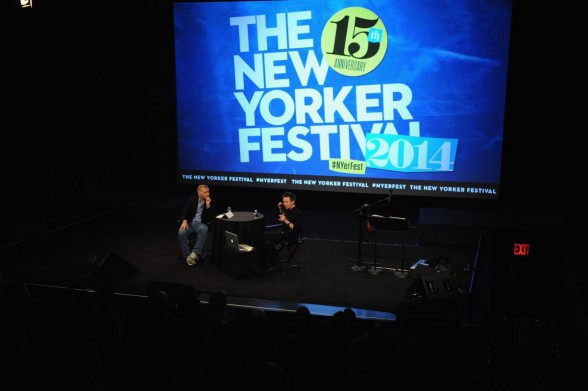
The talk, which included 30 minutes of discussion with Alex Ross, 30 minutes of audience Q&A, and finally 30 minutes of performance, was a candid exploration of mostly recent endeavors and observations. They first focused on Anderson’s Landfall, commissioned by the illustrious Kronos Quartet. An enigmatic and prolific composer, she admitted that orchestration has always made her uncomfortable, and that the time limitations posed by creation, rehearsal, and performance of these pieces do not allow much room for error or adjustment. The work is singularly gorgeous, even if she says she was slightly horrified at hearing it initially realized. Centered around the devastation and loss wrought by Hurricane Sandy, it is as much about the spaces in between as the notes executed.
Anderson lived in New York City at the time of the disaster. She recalled how the initial heartbreak of losing unthinkable amounts of electronics and equipment in storage gave way to a strange kind of relief–“I was happy it cleared out my basement,” she says with an optimism that can only be afforded to someone who can bear to lose a collection like that. “I was never going to use 20 projectors and a host of MIDI controllers again anyway,” she admitted, not gloating, but poignantly highlighting the digital rot that plagues pieces of technology of that ilk–what was once groundbreaking is now antiquated, just as our iPads and Bluetooth instruments will inevitably be replaced by items currently existing in the dreams of the more industrious.
Anderson quit professional violin at a young age, realizing that “it wouldn’t allow me to do anything else.” Ever a champion of nonrestriction, she says she still respects craft immensely–this is apparent in her creations, whether aural, visual, or somewhere in between. She is perhaps downplaying her own skill, a talent not to be undervalued. Her background as a performer has informed some of her inventions–notably the many violins she has built by hand over the years. She is fascinated by the sounds that are naturally emitted from the instrument and heavily experienced by the musician, but which never really reach the audience–airy overtones, the scratching of horse hair on strings, or the residual harmonics that putter out before completing the trek to our ears. Building instruments on her own that emphasize these factors, in tandem with electronic instrumentation, allows her a freedom to reinvent what many consider to already be a perfect object and create something entirely provocative and wholly experiential, its considerate physical beauty eclipsed only by its aural experience, which, like the artist herself, always spins an unpredictable web.
Diverse media and controversial projects
Anderson has never found a clear distinction between different forms of art. “Making paintings feels exactly like making music–my hands and arms make the same motions when I use my brush as when I use my bow,” she says. Her visual works are equally as fluent at expressing her ideas, and as her reluctantly accepted title of “multimedia artist” suggests, they almost always include a variety of media and performance aspects. During the talk, she showed us a program that she designed for her laptop that receives signals from the computer’s microphone and relays the information to a word processor that projects sentences onto the screen–essentially a closed-caption for her own voice that displays totally unrelated parts of her fractured stories instead of what she is actually saying. The confusing product of all of this is both entertaining and maddening, the point of which is, in her words, to simply ask the question, “Should you believe what you hear or what you see?” When she finishes the demo, I’m not really sure which of my senses to trust–exactly what she had in mind.
One of Anderson’s more eyebrow-raising endeavors was a concert played exclusively for dogs at the prestigious Sydney Opera House in 2010. She was interested in how our more aurally perceptive best friends would handle her compositions (just avoid really high frequencies, she was instructed). The space was separated by size of dog (ankle-biters, comfortable lap-sitters, and those who still think it’s okay to be lap-sitters once grown to waist height). She described how composed the canine crowd was, much to the astonishment of the many concerned human caretakers ready to snuff out any furry fights they imagined would break out. I suppose dogs aren’t keen on crowd-surfing–or it could just be the nature of Anderson’s trance-inducing pieces (we unfortunately don’t have much to compare the endeavor with). All jokes aside, the concert was an example of the seriousness with which the artist takes the experiences of all living things, and how one’s species or inability to express doesn’t constitute an inability to interpret and enjoy. This indeed deserves to be taken seriously.
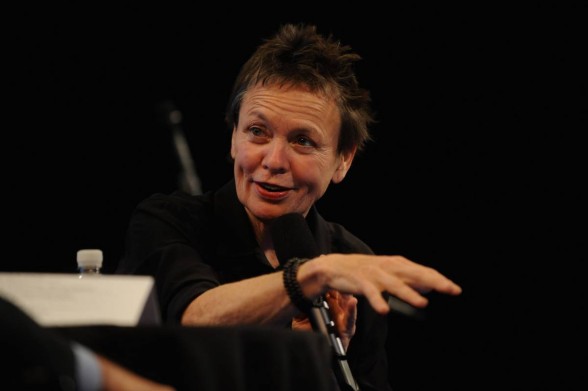
A large chunk of time was deservedly spent discussing one of her most controversial and eerily vivid works, Dal Vivo (Italian for “live”)–one that prompted the Department of Homeland Security to contact her with the message, “You will never make this work of art in the United States of America, ever.” “Well, that seemed pretty final,” she said wryly. The piece, which in its development phase went through many incarnations in many different parts of the world, including the Whitney Museum of American Art and an Austrian church, was eventually realized in Milan. Anderson was fascinated with the idea of imprisonment and seclusion, and decided that she wanted to make a life-size mold of a real Death Row prisoner, put it in a church, and project a live feed of the prisoner sitting in the exact same position onto the mold every day for a month. The connection between the two separate institutions (prison, and church or museum) was meant to highlight different interpretations of confinement and seclusion–one veiled and the other proclaimed.
Initially, she intended for the piece to take place in Austria, but as she came to learn, Austrian law dictated that upon incarceration, prisoners waive all rights to their image. The next collaborative possibility was between Sing Sing Correctional Facility and the Whitney, which Anderson cleverly described as “two guarded institutions.” After the denial by Homeland Security, her attention turned to Milan. Picking a prisoner to use as the subject proved difficult. After she had interviewed many prisoners, one stood out for his response to her inquiry as to why he wanted to participate. “I see this as my virtual escape,” he said. “He’s my guy,” Anderson responded.
The work came to be what Anderson called a “meditation on time”. In actuality, time moves at the same rate for all of us, but our living situation greatly dictates how it feels. Whether the prisoner was any more or less present in his cell or in the church is a tricky question; regardless of his physical occupation of space in prison, he was thinking about the church, wishing to be in the church, and projected live on a full-size replica of himself in the church. The interpretation lies in a person’s definition of here and now. Some questioned whether the project was in fact an exploitation of the man, but his mind felt free–which is more than half the battle, and we also must not forget that he is in that cell for a reason.
Anderson ended the event with a short selection of musical pieces. ”This is not a show, let me be clear–more like a demo,” she emphasized. A short show-and-tell followed, with examples of the electronics and equipment she has meticulously customized for her unique brand of looping. Authoritative and unflinching, her performance asserted why she is so renowned–sitting in the first row, I could not have escaped her spoken words even if I’d wanted to. I was arrested by her over-10-minute-long, sweeping piece “Another Day in America,” narrated by Fenway Bergamot, her invented persona for the omniscient guiding male voice of America, realized though a vocal modifier that dropped Anderson’s voice down a few octaves. The final phrase of the piece still haunts me, echoing through my head in that deep, sensuous drawl. “Another day in America…how do we begin again? How do we begin?”


